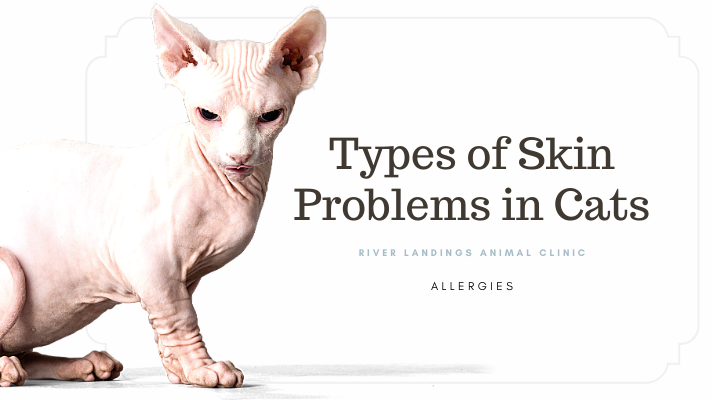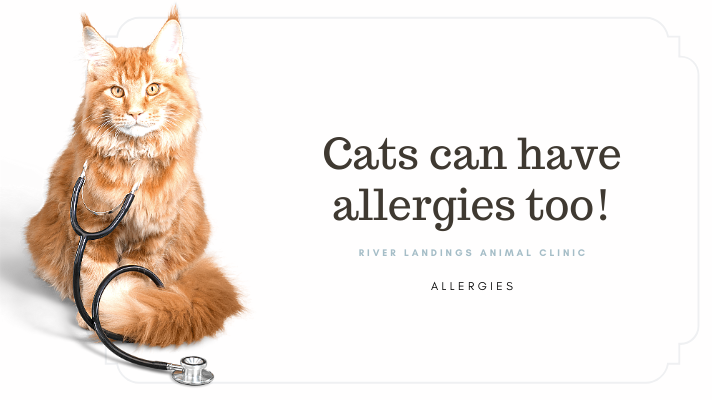If your cat's got a case of constant scratching and licking, a skin problem may be to blame. Cats are susceptible to skin infections, parasites, allergies, and many other conditions commonly seen in people.
Feline Acne
Yes—cats get pimples, too. Feline acne typically appears on and around a cat's chin. Possible causes include stress, poor grooming, a reaction to a medication, an underlying skin condition, or even the plastic bowl you put out with her food or water. Your veterinarian may recommend a specialized shampoo or gel to clear up the breakout, or antibiotics if a bacterial infection accompanies the acne.
Bacterial Infections
In many cases, bacterial skin infections develop as a result of another skin problem. For example, feline acne can make a cat's hair follicles more vulnerable to infection, resulting in folliculitis. Bacterial infections may be treated with antibiotics, but it's important to address any underlying skin conditions to prevent a recurrence.
Yeast Infections
Yeast infections are caused by a fungus and are also more likely in cats that have other medical problems. The ear is one of the most common spots for a yeast infection. Symptoms may include a black or yellow discharge, redness of the ear flap, and persistent scratching of the ear. Yeast infections respond well to treatment with antifungal medicine, but be sure to get a diagnosis from a veterinarian before using anything on your cat.
Ringworm
Ringworm is another type of fungus that affects cats, especially if they are under age 1. It may cause circular lesions on a cat’s head, ears, and forelimbs as well as any other part of the body. The skin around these lesions is often flaky and bald. Ringworm is highly contagious and can spread to other pets in the home, as well as to people. Treatment depends on the severity but may include specialized shampoos, ointments, or oral medications.
Sporotrichosis
Yet another fungus — although rare — sporotrichosis produces small, hard skin lesions that may leak fluid. Sporotrichosis is considered to be a public health concern because the fungus is known to spread from cats to humans. People with a compromised immune system are especially vulnerable. For these reasons, cats with sporotrichosis should be treated promptly, and caregivers should be meticulous about hygiene.
Allergic Dermatitis
Cats can have allergic reactions to grooming products, food, and environmental irritants, such as pollen or flea bites. Scratching the head or neck is a common sign of food allergies. Symptoms of other allergies include chewing on the paws or base of the tail or scratching the ears. Allergies can also cause hair loss or skin lesions anywhere on the body, including the belly. There are a variety of treatments to soothe itchy skin associated with allergies, but avoiding exposure to the irritants is the best strategy.
Shedding and Hair Loss (Alopecia)
If you live with cats, you learn to cope with cat hair on your favorite sweater. But if you notice your cat is losing more hair than usual or has bald patches, see your veterinarian as soon as possible. Abnormal hair loss can be a warning sign of several illnesses, as well as fleas, stress, allergies, or poor nutrition.
Fleas
The idea of tiny insects feeding on the blood of your cat may make you shudder, but fleas are a very common problem. You can look for them or their droppings in a cat's coat, especially where the fur is pale. Other signs of a flea infestation are persistent scratching, crusty skin lesions, and thinning hair above the base of the tail. To eradicate fleas, you’ll need to treat your cat as well as your furniture, bedding, and rugs.
What has been the gold standard of flea control is a monthly flea prevention protocol. It not only kills fleas on your cat, but those in your home should eventually be eliminated as they fail to reproduce. Monthly control, though, is not the only option. There are also products that can be given every other month as well as a collar that can provide protection for up to 8 months. Talk to your vet about what would be best for your cat. And remember: Treating all pets in the home is necessary for whatever plan you use to be effective.
Ear Mites
Ear mites are tiny parasites that are drawn to the wax and oils inside a cat’s ear. As they feed, they cause inflammation that can lead to a serious skin or ear infection. Signs of ear mites include excessive scratching of the ears, head shaking, and a strong odor and a dark discharge from the ears. Suspect ear mites when both ears are affected. Mites can be treated with a topical product prescribed by your vet. Ear mites are also contagious to other animals.
Lice
Lice are parasites that feed on dry skin. They are commonly found on young, neglected cats and often go unnoticed. Large infestations can lead to scratching, restlessness, unusual coat appearance, and hair loss. Like mites, lice can be treated with a topical solution. Because lice are species-specific, you do not need to worry about getting lice from your cat.
Stud Tail
Also called tail gland hyperplasia, stud tail refers to overactive glands on the top of the tail. These glands produce waxy excretions that result in hair loss and crusty lesions. In severe cases, the condition can make the tail vulnerable to bacterial infections. Neutering may eliminate the problem in male cats. Other treatment options include diligent grooming of the tail and the use of specially formulated shampoos.
Eosinophilic Granuloma
If your cat has raised ulcers or lesions on the nose or lips, she may be having a type of allergic reaction known as an eosinophilic granuloma. This reaction can occur anywhere on the body, but is most common on the face, pads of the feet, and thighs. Food allergies or fleas are sometimes to blame, but the lesions can also result from bacterial infections. Treatment depends on what is causing the reaction.
Skin Tumors
A lump in your cat's skin is not necessarily cancer, but should be checked by a veterinarian. Older cats and those with white ears and heads are especially susceptible to skin cancer. To confirm a diagnosis of cancer, a biopsy is necessary. If the lump is small enough, a vet may recommend removing it entirely. For tumors that have not spread, this may be the only treatment needed.
Dry, Flaky Skin
Like people, some cats get dry, flaky skin in the winter. It's usually nothing serious, but have your veterinarian take a look. Persistent dandruff may be a sign of poor nutrition, inadequate grooming, or an underlying medical problem. Special shampoos and supplements of omega-3 fatty acids can help treat feline dandruff.
Compulsive Grooming
Cats are known to be fastidious groomers, but sometimes they overdo it. Compulsive licking, chewing, or sucking on the skin may lead to irritation, infection, and thinning hair (a condition called psychogenic alopecia). Cats may groom compulsively in response to stress, such as moving into a new home, but they may also overgroom due to a medical problem such as arthritis. If this describes your cat, talk to your vet about stress reduction and behavior modification strategies that can help as well as address some underlying medical issues.
When to See the Vet
Check with your veterinarian as soon as possible if you find any oddities on your cat’s skin -- flaking, scaling, redness, or bald patches. Even if the skin looks fine, your cat should be examined if she is scratching, licking, or biting herself excessively.
Hear From Us Again
Don't forget to subscribe to our email newsletter for more recipes, articles, and clinic updates delivered to your inbox (here). Or, you can keep up to date by liking and following our Facebook page (here).
Related: We have more information under our cat health + client care categories.





